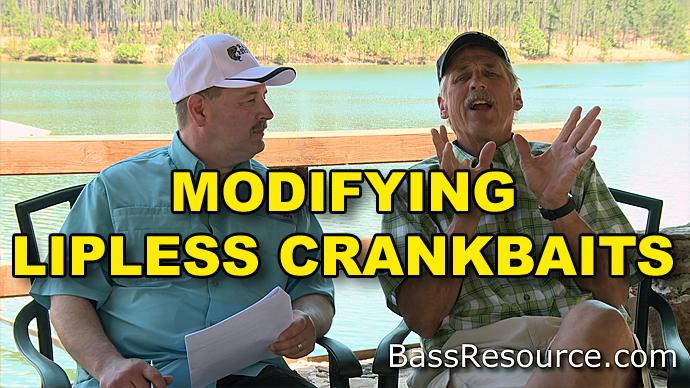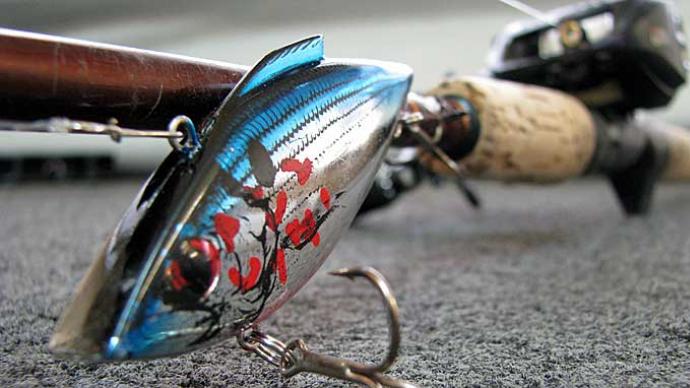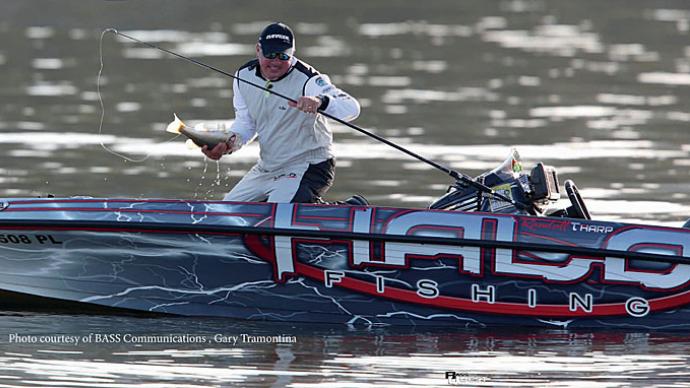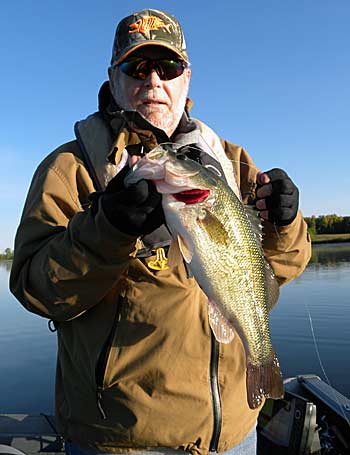
When you walk the isles at your local tackle shop, rows of baits upon baits can have a place in your tackle box. But how do you know what works and what you should carry? You may turn towards articles like this to find new baits just hitting the market, or you may take advice from fellow fishermen as you see them lift bass after bass over the side of the boat.
Rat-L-Traps, or rattle baits as some call them, have been a bass staple for many years, but they have fallen off the radar since the introduction of the Vibrating Jig (Chatter Bait). Rattle baits are still top sellers in some markets, but anglers fishing them try to keep them on the down low, trying to downplay the success these baits produce. This article will shed some light on Rattle baits, how to use them, and how to tweak them to put more bass in the boat.
Pick Your Bait
When you look at rattle bait availability, the choices are endless. All the major bait companies have their selection. A few examples are Spro's Aruku Shad, Strike King’s Red Eye Shad, Bill Lewis Rat-L Trap, and Yozuri's Rattlin Vibe, among the many brands.
My advice regarding baits is to take a close look at what is available, grab a few different baits, and try them in your waters to see how they fish, what they sound like, and what they catch. Then, when you’re finished, stock at least 3 to 5 bait brands in your Trap box. I say three to five because the rattle sound and the bait action may differ by company.
Another crucial point is that some companies offer baits made with rattles and others with tungsten. These two will sound different, giving you a wider choice from the start.
Stock a few different sizes. I stock a few 3/8oz sizes and use 1/2oz, 5/8oz, and 1oz sizes the most.
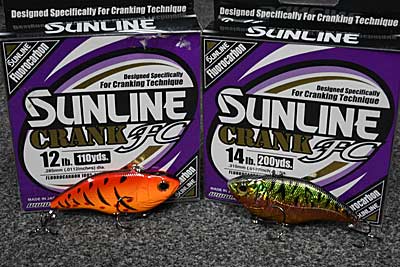
When it comes to colors, pick forage that matches your waters (Bluegill, Shad, Craws, etc.). Also, pick colors that stand out Chrome, Reds, and Chartreuse’s bait colors that the bass can see in cover or from a distance away.
Rattle Bait Equipment
I have a few ways in how I fish traps. First, I'll get up on the tops of the flats and bomb cast out when I look for signs of bass in the area. Then, I aim to make a long cast and touch every weed I can on my way back to the boat, trying to trigger bites that I can along the way. I’m using a Denali 7'4" Lithium Pro (LP763CB). I teamed this with a Denali baitcaster reel with 16lb Sunline Sniper FC line. I use a snap at the end of my line as this gives the bait a little more action and is also quicker to change baits when trying to get the color dialed in.
My whole reason for the longer rod choice, in this case, is to make longer casts when looking for signs of bass. So I can cover more water quicker, trying to be more efficient with my time.
I also get a better hook set with the longer rod at the end of a long cast, with relates to more bass over the boat side.
When I’m in an area that is producing, I’ll make a rod adjustment and go to a Denali 7' Lithium Pro (LP703WJ). This rod is a jig/worm rod, not a crankbait rod. My reason for using this rod instead of a cranking rod is that with the shorter rod, I need a stiffer action rod to break the bait free from the cover and back on its way again. If I use a lighter rod, I often won’t be able to rip the bait free, resulting in wasted casts and time.
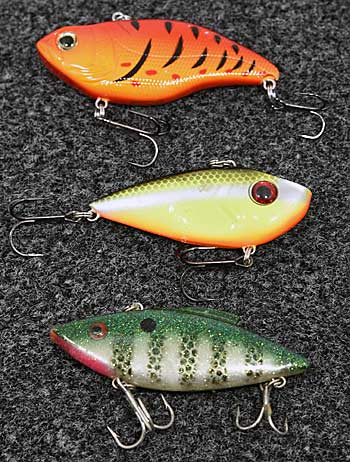
The more wasted casts I have, the fewer bass I can catch. When targeting deeper water flats, I’ll switch to a Denali reel spooled with Sunline 12lb Sniper FC line to get my bait down deeper. The line change is because my bait won’t be held up due to line diameter as I’m not at the same angle fishing weeds in 10ft than I’m fishing weeds in 5ft. It lets me slow down and get the bait deeper to reach the fish-holding weeds.
Rattle Retrieves
Breaking down rattle baits retrieves through the years, I have learned to keep an open slate when I start. Most of my days, I’ll make a cast and start to reel. Then, as I retrieve my rattle baits, I aim to make as much contact with the weed tops as possible and break the bait free and on its way again. I act like I’m setting the hook to break my bait free and reeling until the next hook-up.
Another variation that I use in a little deeper water is I’ll make my cast and start to reel my bait. If I get hooked up on the cover, I’ll not do a side hook; I’ll do a semi-over-the-shoulder set. It breaks my bait free to jump forward and slack line sink before I can get the slack picked up. Most of the bites will be generated as my bait breaks free from the cover, or the bait’s slack line shimmies back to the bottom.
I have also generated strikes when I reel again, taking the slack out of the line and getting the bait swimming again. The best advice I can give with this tactic is by ready to set the hook at the slightest strike you feel, as you never know when it may come.
One more tactic is a deeper water tactic. Make a cast, let the bait settle to the bottom on a slack line, and let the line go limp. Then, reel the slack and give an up pull with the rod. It will get the bait to swim up off the bottom and let it fall back to the bottom on a slack line. Be careful when you go to lift the bait again for another drop to set the hook. You can do this with a rod and fluorocarbon line, but I get better results on a baitcaster rod with a 15lb braid teamed with a fluorocarbon leader.
Trap Tweaks
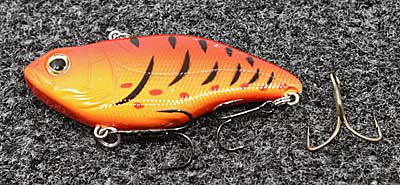
Here are a few tweaks produced over the years to help improve my trap fishing.
Change My Back Hook
I change this hook on my back hook to a Gamakatsu EWG (Extra Wide Gap) short shank hook. With the shorter shank, I cut down the waisted casts as I can break the bait free easier, resulting in fewer wasted casts but with the wider hook gap, I get better hooking power to keep the fish hooked and back to the boat.
Keep Your Hooks Sticky Sharp
On many of the strikes, when fishing moving baits, a fair amount of the bass doesn’t get a chance to eat your bait. Instead, they swipe at the bait in a movement to stun it and then turn to eat it. So make sure your hooks are sharp when the bass makes its move. This will result in more hook-ups on your day of fishing.
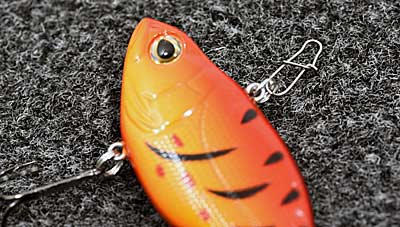
Use A Snap
When trap fishing, I like to use a snap on my line. I get more movement and action out of the baits, and changing them is quicker when I’m looking for bites.
This has given you a fresh look at the rattle bait and a few new ideas about how good a rattle trap can be. It’s a bass staple for a specific reason. It just flat-out catches bass throughout the year.
I hope they are now if you still need to get rattle baits on your radar. You can cover water with these baits, triggering strikes along the way. If you have yet to use any of the tweaks I have listed, use these to your advantage to help put more bass in your boat.
BassResource may receive a portion of revenues if you make a purchase using a link above.


